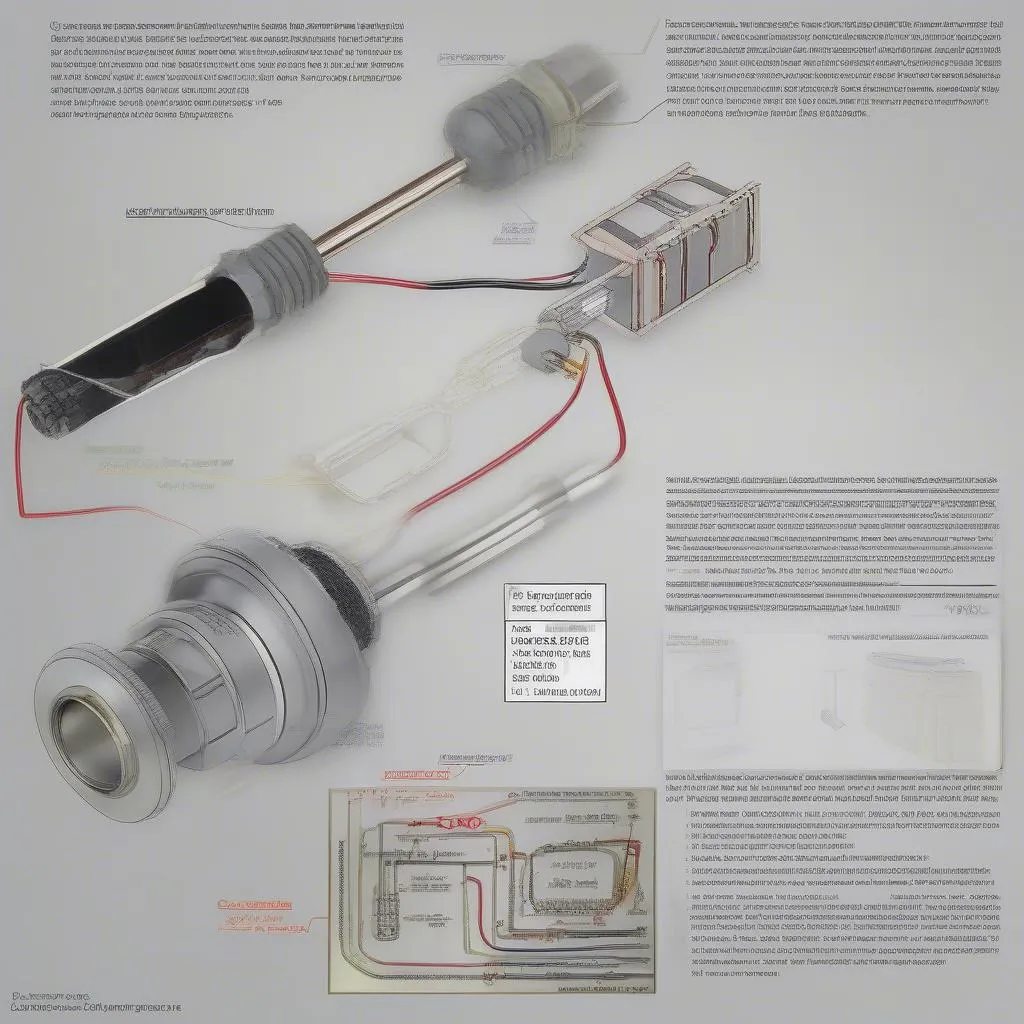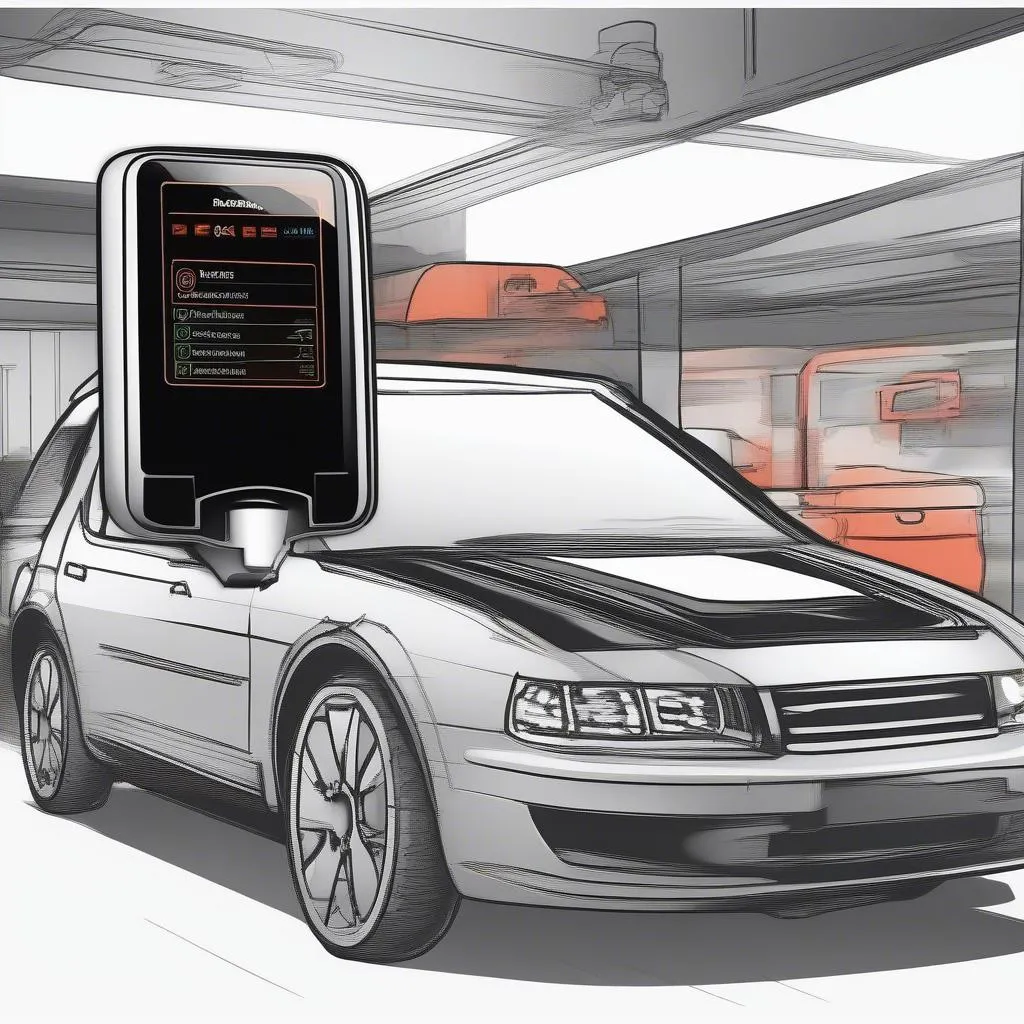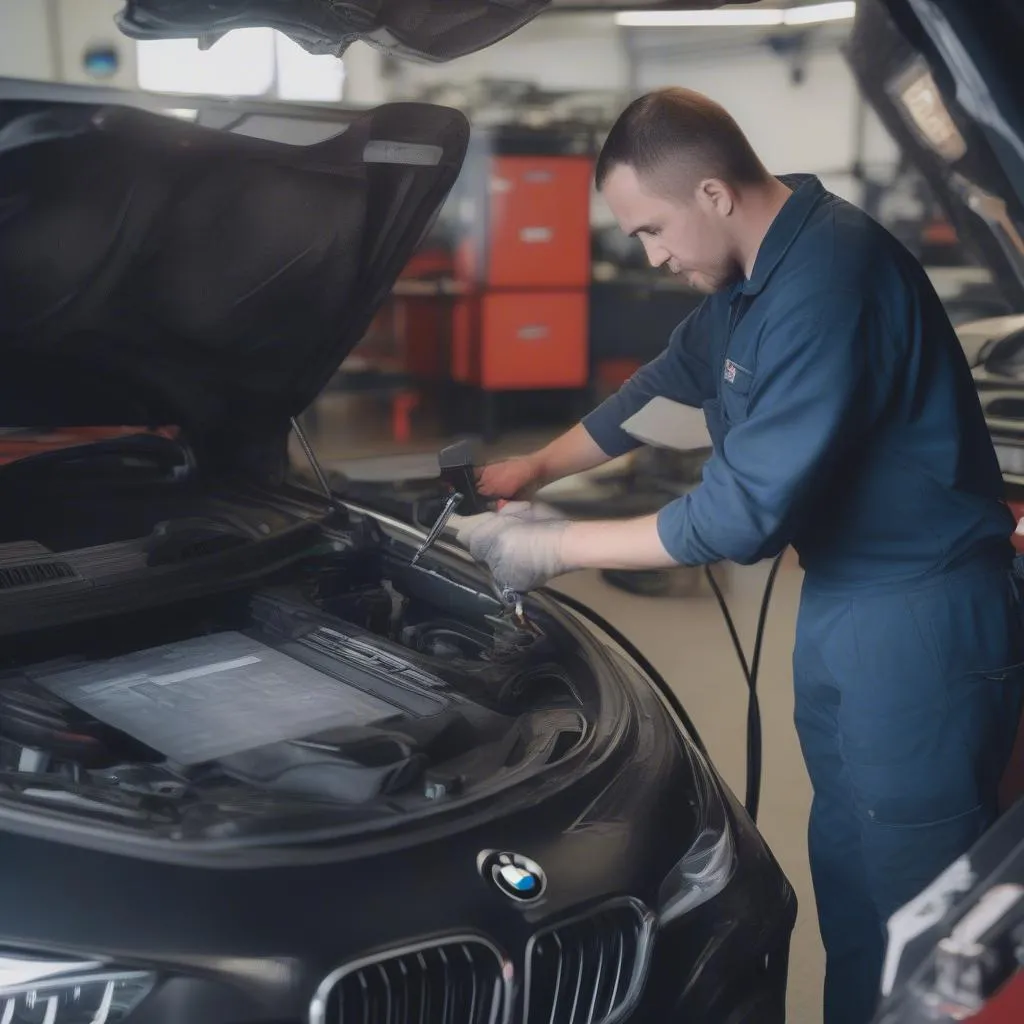Imagine you’re cruising down the highway in your Chevrolet Silverado, enjoying the open road and the wind in your hair. Suddenly, the engine light comes on, and a dreaded “Check Engine” message flashes on your dashboard. You pull over, check your engine, and everything seems fine. But that nagging light just won’t go away.
You’re not alone. This scenario is a common experience for many car owners, especially those driving GM vehicles. In this article, we’ll dive into the meaning of the Gm Obd Code P0140, why it happens, and how you can troubleshoot and fix it.
Understanding Gm Obd Code P0140
What Does P0140 Mean?
The OBD code P0140 is a diagnostic trouble code (DTC) that signals a problem with the oxygen sensor heater circuit in your car’s exhaust system. This sensor is crucial for monitoring the oxygen content in your exhaust gases and sending information to the engine control module (ECM).
Here’s how the oxygen sensor heater circuit works:
- The oxygen sensor, located in the exhaust manifold, uses a heated element to ensure it operates efficiently at various temperatures.
- The ECM controls the heater element’s power supply to maintain optimal operating conditions for the sensor.
- When the ECM detects a malfunction in the heater circuit, it triggers the P0140 code.
Why is the oxygen sensor heater circuit important?
A properly functioning oxygen sensor heater circuit is essential for accurate engine operation. Here’s why:
- Precise Fuel-Air Mixture: The sensor data helps the ECM determine the optimal fuel-air mixture for combustion, ensuring proper engine performance and fuel efficiency.
- Reduced Emissions: The sensor plays a critical role in minimizing harmful emissions from the exhaust system.
- Improved Engine Efficiency: By constantly monitoring the exhaust gases, the sensor helps the ECM optimize engine performance and minimize fuel consumption.
Common Causes of P0140 Code
Now that you understand the importance of the oxygen sensor heater circuit, let’s explore some common reasons why you might encounter the P0140 code:
- Faulty Oxygen Sensor: The most common culprit is a defective oxygen sensor itself, especially if it’s old or has been exposed to extreme temperatures and harsh conditions.
- Damaged Heater Element: The sensor’s heater element might be damaged, leading to a malfunction in the circuit.
- Open or Short Circuit: Wires connecting the oxygen sensor to the ECM could be damaged, causing an open or short circuit.
- ECM Failure: In rare cases, the ECM itself might be faulty, causing the P0140 code.
Diagnosing and Troubleshooting P0140 Code
Here’s a step-by-step guide to diagnosing and troubleshooting the P0140 code:
-
Inspect the Oxygen Sensor:
- Visual Inspection: Locate the oxygen sensor in your exhaust manifold. Look for signs of damage, corrosion, or debris build-up.
- Wire Inspection: Check the wires connecting the sensor to the ECM for any signs of wear, chafing, or loose connections.
- Resistance Check: If your scanner or multimeter allows for resistance checks, test the heater circuit’s resistance. It should fall within a specific range specified in your car’s service manual.
-
Check for Open or Short Circuits:
- Continuity Test: Using a multimeter, test the continuity of the wiring between the oxygen sensor and the ECM. A broken or open circuit will prevent current flow.
- Short Circuit Check: Inspect the wiring for any shorts to ground or other components, which can disrupt the heater circuit’s operation.
-
Consider the ECM:
- Code Scan: Use a professional-grade scanner, such as the Dealer Scanner for European Cars, to scan for other codes that might indicate an ECM malfunction.
-
Replace the Oxygen Sensor:
- Genuine Parts: If your investigation reveals a faulty oxygen sensor, replace it with a high-quality, OEM-certified sensor from a reputable automotive parts supplier.
-
Clear the Code and Test:
- Code Clearing: After replacing the sensor or fixing any wiring issues, use your scanner to clear the P0140 code.
- Road Test: Drive your car for a few miles to see if the code returns. If it does, you may need further investigation or consultation with a qualified mechanic.
Frequently Asked Questions About P0140 Code
Can I Drive My Car with P0140 Code?
While your car might still be drivable, it’s not advisable to ignore the P0140 code. Driving with a faulty oxygen sensor can lead to:
- Reduced Fuel Efficiency: The ECM can’t correctly adjust the fuel-air mixture, resulting in higher fuel consumption.
- Increased Emissions: Unburnt fuel and other emissions will pollute the environment and potentially damage the catalytic converter.
- Engine Performance Issues: Your engine might experience hesitation, rough idling, or loss of power due to incorrect fuel-air ratios.
What if I’m Driving a European Car?
If you own a European car, such as a BMW, Mercedes, or Audi, remember that the diagnostic process and potential solutions for the P0140 code may differ slightly.
It’s crucial to use a specialized scanner that is compatible with European vehicles, such as the Dealer Scanner for European Cars, to properly diagnose the issue.
What Happens If I Don’t Fix the P0140 Code?
Ignoring the P0140 code can lead to more severe problems down the line. A malfunctioning oxygen sensor can:
- Damage the Catalytic Converter: The excess fuel and emissions can damage the catalytic converter, which is expensive to replace.
- Cause Engine Misfires: The incorrect fuel-air mixture might lead to engine misfires, causing rough running and potentially damaging engine components.
Tips for Preventing P0140 Code
- Regular Maintenance: Follow the recommended maintenance schedule for your vehicle, including regular oil changes, spark plug replacement, and emissions checks.
- Use High-Quality Fuel: Using lower-grade fuel can increase the risk of carbon buildup on the oxygen sensor, affecting its performance.
- Avoid Harsh Driving Conditions: Minimize exposure to extreme temperatures, dusty environments, and aggressive driving habits.
Let’s Connect!
Need assistance with diagnosing or fixing your P0140 code? Don’t hesitate to contact our team of expert automotive technicians at Whatsapp: +84767531508. We’re here to help you navigate this automotive issue with expertise and confidence.
 oxygen-sensor-heater-circuit
oxygen-sensor-heater-circuit
 diagnostics-tool
diagnostics-tool
 bmw-maintenance
bmw-maintenance
Conclusion
Encountering the P0140 code can be a stressful experience. But by understanding the underlying cause and following the troubleshooting steps outlined above, you can effectively diagnose and address this common issue. Remember, prioritizing regular maintenance and using a professional-grade scanner like the Dealer Scanner for European Cars can help you avoid costly repairs and maintain your car’s optimal performance.
We encourage you to share your experiences and ask any further questions in the comments section below. And don’t forget to explore other helpful resources and articles on our website, Tech Car USA, dedicated to providing valuable insights and solutions for your car’s health and performance.